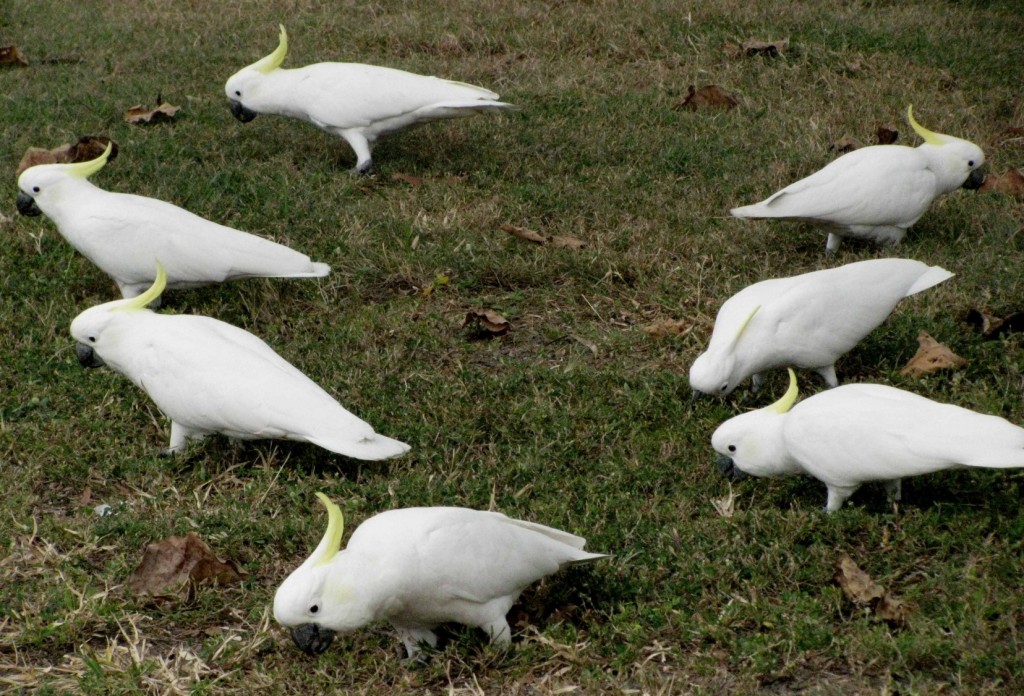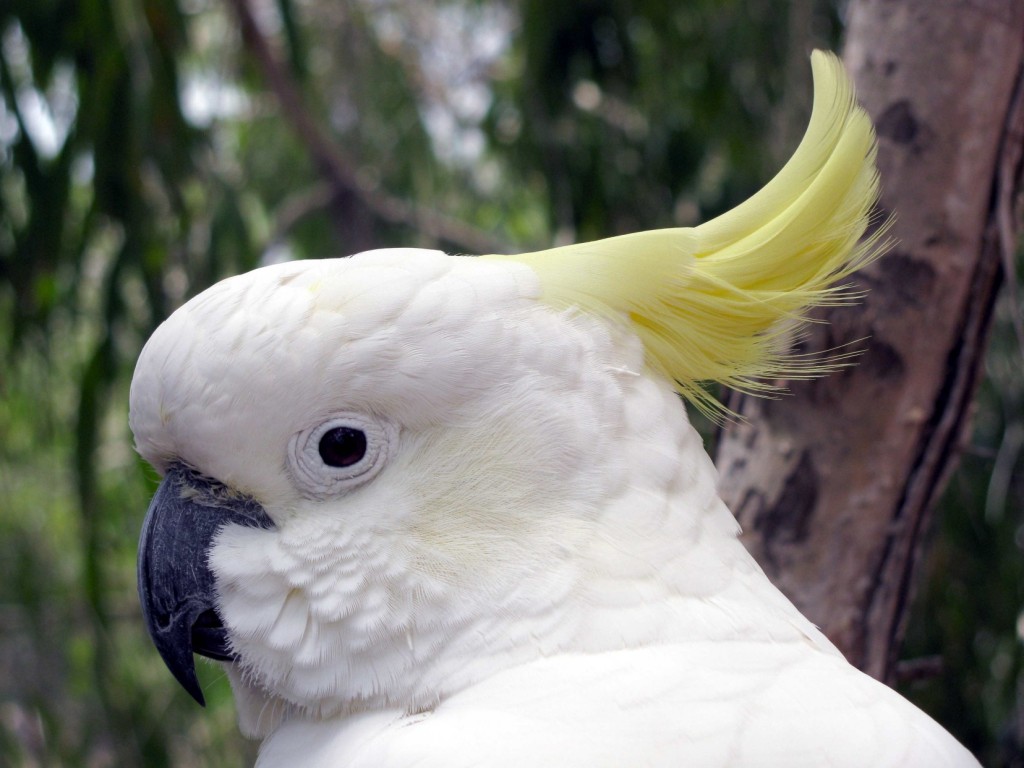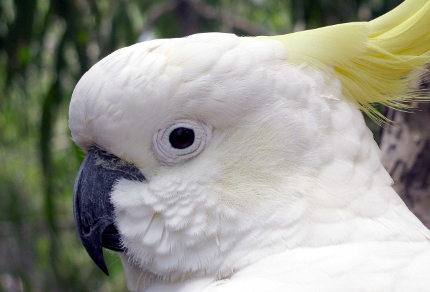
Sulphur-crested Cockatoo (© Magi Nams)
HAPPY EARTH DAY! Brilliant sun pours down onto Nova Scotia, melting the last of the snow, warming the soil, and awakening tulips and daffodils. The lawn is greening and growing before my eyes, its photosynthetic train running wild. Newly arrived white-throated sparrows, winter wrens, and ruby-crowned kinglets belt out territorial songs from the forest, and belted kingfishers perform aerial acrobatics, leaving winter in their wake. Suddenly the air, so long still and waiting, is flecked with bird song that will swell into outright musical clutter a month from now. Yet even that bouyant, gentle cacophony will pale in comparison to eastern Australia’s raucous dawn chorus headed up by kookaburras, lorikeets, and cockatoos.
The sulphur-crested cockatoo is one of the most strident Aussie vocalists. A chunky white bird washed with yellow and sporting a yellow crest, it lives in coastal and near-coastal habitats in northern and eastern Australia, as well as throughout Tasmania. An introduced population of ‘white cockies’ also flourishes in southwest Western Australia. (1)
.

Sulphur-crested Cockatoos (© Magi Nams)
My family first encountered sulphur-crested cockatoos (a species we’d only ever seen in a pet store in Canada) in the Euroka Clearing campground in Blue Mountains National Park of New South Wales, where a flock foraged unwarily on the campground lawn. Young cockatoos begged food while adult birds tore out roots of grasses and herbs and made grumbling noises. We were enchanted, my younger son’s’ eyes shot through with wonder. Days later, a captive cockatoo in an aviary in Port Macquarie mimicked a few human words, then let rip a shattering scream that nearly knocked my older son off his feet.

Sulphur-crested Cockatoo (© Vilis Nams)
In 2010, my husband Vilis and I spent a year based in Townsville, Queensland, a dry tropics city where sulphur-crested cockatoos abound in city green spaces such as Ross River Parkway and Castle Hill. We became well-acquainted with the cockies’ ear-splitting screeches and brilliant white plumages topped with those spiky, lemon-yellow head crests. The cockies foraged in trees and on the ground, their crests most often collapsed into a neat, upward curl. However, the birds sometimes fanned their mobile crests into a striking row of feather spikes, an impressive display.

Sulphur-crested Cockatoo (© Magi Nams)
All cockatoos are large, simply-coloured birds, in contrast to their more colourful parrot cousins. However, like parrots, cockatoos are long-lived birds that use their curved, articulated (jointed) beaks and zygodactylous feet (two toes forward, two toes backward) to forage for food. (2) I watched sulphur-crested cockatoos grub for roots and rip open fruits. These elegant rabble-rousers also eat berries, nuts, invertebrates, palm shoots, and seeds, and nest in holes in large trees. (2)
Unlike the majestic red-tailed black-cockatoos, which migrated away from Townsville during the dry season and returned with the Wet, the sulphur-crested cockatoos were sedentary, screeching hoarsely and offering great birding throughout the year.
Reference:
1. Graham Pizzy and Frank Knight. The Field Guide to the Birds of Australia. 2000. Angus & Robertson, Sydney, pp. 264-265.
2. Ibid, p. 532.


